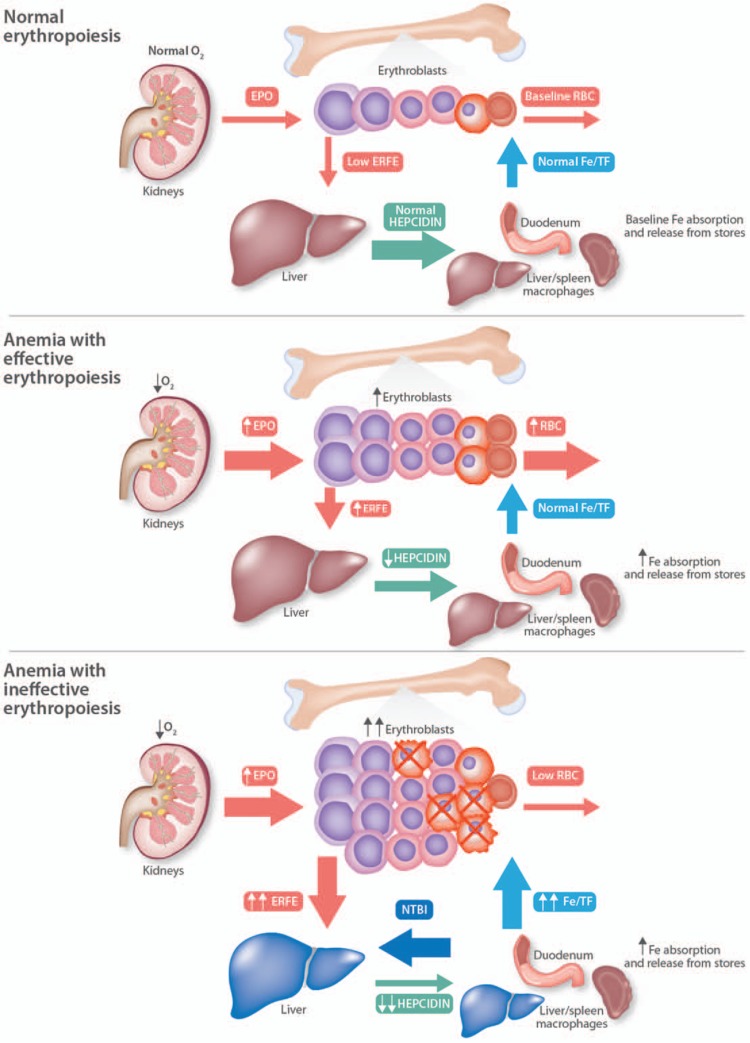Figure 2.
Erythroferrone in anemias with effective vs ineffective erythropoiesis. In anemias, decreased oxygen tension in the kidney drives increased erythropoietin production, which induces ERFE secretion by erythroblasts and thereby suppresses the hepatic production of hepcidin. In anemias with ineffective erythropoiesis, the erythroblast population is greatly expanded but many erythroblasts undergo apoptosis (indicated by X) before completing differentiation, so that relatively few erythrocytes are produced. Because there are many more erythroblasts when erythropoiesis is ineffective, ERFE production is further increased and the suppression of hepcidin is greater than in effective erythropoiesis. Very low hepcidin levels cause hyperabsorption of iron and the release of iron from macrophages. Transferrin saturation rises and the generation of nontransferrin-bound iron (NTBI) is increased. NTBI is taken up by the liver (depicted in blue) and other parenchymal organs, leading to organ damage.

